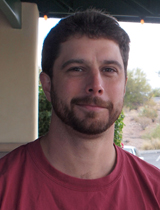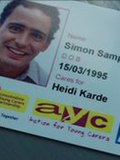On mornings when her aunt was sickest, Rachel Waszczak helped the elderly woman out of bed, cleaned her home and dressed her, and made sure she took her medicines and got to the doctor on time. At night, she helped her to the bathroom and to bed, checking her for bedsores and infections.
Rachel was her aunt’s caregiver. She was also a 17-year-old girl--and that, according to caregiving researchers, made her efforts all but invisible.
That’s because research on Americans who care for sick, elderly or disabled family members over the past decade has focused overwhelmingly on what’s been termed the “sandwich generation,” the estimated 16 million middle-aged Americans caught between raising their kids and caring for their parents. Meanwhile, only a handful of studies have looked at caregivers under age 30.
Christine Fruhauf, associate director of the Center on Aging at Colorado State University in Fort Collins, estimates that as many as 7.5 million young people are caregivers, including at least 1.4 million children between the ages of 8 and 18.
Caregiving children and young adults often feel isolated, and they face interruptions and delays of their studies, career commitments and personal relationships that Fruhauf and the few other researchers in this field say will impact the rest of their lives.
Risks vs. Rewards
Rachel Waszczak, who is now 29, has felt the impact. “Starting my career was definitely slower,” she recalls. “I was nervous to leave home.” But her caregiving experience also made her career choice easier, she adds, and more fulfilling: it inspired her to become a nurse. She now works at Tucson’s Health South Rehabilitation Hospital, the same hospital where she once accompanied her aunt.
Less time in the classroom and a later start on their careers can lead young caregivers to earn less income over their lifetimes, and puts them at risk of dropping out of school in the short-term. In fact, a 2006 study by the public policy firm Civic Enterprises found that 22 percent of high school dropouts left school to care for a family member.
Juggling school and work with caregiving was a challenge for Waszczak’s husband, John, who became a caregiver at age 20. John and his younger brother Tom helped their mother care for their grandmother, Winifred M. Sullivan Bell, a dementia sufferer and stroke survivor who had once been a concert pianist. The experience was difficult, but always worth it, he says.
 John Waszczak and his younger brother Tom helped care for their grandmother while in their teens and early 20s.
John Waszczak and his younger brother Tom helped care for their grandmother while in their teens and early 20s.“It helped me put family up at the top of the list of priorities, which is where it should be,” he says. “People in the assisted living facility [where my grandmother stayed] would always say, ‘It’s so great you’re here.’ I think that speaks to what they see: that a lot of people don’t make the time.”
Portrait of a Caregiver
John first became involved in his grandmother's care when he helped her move from Hatboro, Pennsylvania, into his mother Brigid's Tucson home. Brigid Waszczak would be her mother's primary caregiver for the next nine years.
"I had to give up the rest of my life to care for my mother," she recalls. "I could not have done that without the boys. I spent a lot of time getting frustrated and crying, and the boys helped me through that--and sometimes I'm sure they felt like crying too."
John and Tom Waszczak provided their grandmother with companionship, took her to the doctor, bought her groceries, and cleaned and decorated her room in the assisted living center into which she eventually moved. At the end of her life, when she was hospitalized, they took on more hands-on tasks, such as washing her face or keeping breathing tubes clean.
Their experience was fairly typical, according to a 2005 United Hospital Fund and National Alliance on Caregiving study on young caregivers. The nationwide survey--the first of its kind--found that many young caregivers share their duties with an older family member, though a substantial minority provide care by themselves. Nearly all help with shopping, cooking, household chores and similar tasks; over half help with tasks called "activities of daily living," which include bathing, dressing and feeding.
"That's just what you do in that situation," says John. "It's a shame that it's considered a sacrifice. I mean, I got to hear her stories and have a better connection with her than if I was seeing her once a year. When presented with the same opportunities again, I'll make the same choice."
John’s upbeat outlook is also not uncommon among young caregivers, says Fruhauf, who cared for her own grandmother in her early 20s.
In her interviews with young caregivers, she’s found that many describe their experience as rewarding, “anticipate they’ll be more knowledgeable when caring for their kids, and often say they’re ‘learning patience,’” she says. Caregivers report feeling appreciated more often than their non-caregiving peers, and--somewhat unexpectedly--are less likely to feel people expect too much of them.
“Now do the rewards outweigh the costs?" asks Fruhauf. "We don’t know that.”
Keeping the Balance
Connie Siskowski knows firsthand how hard to answer that question can be. As a child, she bathed and dressed her grandfather, gave him his medications and slept in the living room nearby him in case he needed anything. At 13, she was the first to find him dead.
“I wondered for years, ‘What if I had woken up a few minutes earlier?’” she recalls. “I was not really healthy after that until my later adult years. It left a scar. But out of that relationship, I really learned love. That bond has been important in my life.”
 Connie Siskowski, a nurse and former caregiver, founded the American Association of Caregiving Youth to offer support, training and resources to caregiving children and teens.
Connie Siskowski, a nurse and former caregiver, founded the American Association of Caregiving Youth to offer support, training and resources to caregiving children and teens.Siskowski went on to become a nurse, and in 2006 founded the American Association of Caregiving Youth to provide the first support network for children and teenagers who care for family members. She says the key to a healthy caregiving experience is for the family to recognize and talk about the child’s role and all the challenges that come with it.
“If there had been some recognition of the loss [of my grandfather] and of my efforts, it would have made a difference,” she says. “At that age, emotionally and developmentally you’re just not prepared.”
Beyond the personal and emotional stumbling blocks, young caregivers also encounter practical obstacles to providing care. Obtaining accurate treatment and medication information can be a challenge, as can having serious discussions with healthcare or social workers or securing home health aides, benefits and other non-medical help. In a 2005 study, over 60 percent of caregivers aged 18 to 25 reported that they learned how to perform caregiving activities on their own or from family, instead of from the health providers in charge of their care recipient's medical treatment.
 In the U.S., young caregivers often have a difficult time obtaining information about their care recipient's treatments and medications. In the U.K., young caregivers (or "carers," as they are known there) can apply for cards that tell health professionals it's OK to share that information with them.
In the U.S., young caregivers often have a difficult time obtaining information about their care recipient's treatments and medications. In the U.K., young caregivers (or "carers," as they are known there) can apply for cards that tell health professionals it's OK to share that information with them. To support caregiving kids in their role and to help families, schools and government agencies recognize their efforts, Siskowski’s organization provides lunchtime support group meetings in schools, safety and first aid classes, home visits to assess the family’s needs and connect them to social services, and access to computers, the Internet and home tutoring. Siskowski also organizes beach parties and camps where kids can find respite from their responsibilities and just be kids.
That’s the least that young caregivers deserve, says Siskowski. “These kids know empathy in spades,” she says. “They’re some of our country’s unsung heroes.”
The Future of Caregiving
The American Association for Caregiving Youth currently works with 350 students in Palm Beach County, Florida, where Siskowski is based, and has an affiliate in Pinellas County. It does not yet extend beyond Florida.
Siskowski is in talks to take her caregiver support project nationwide, but for the moment few resources exist that specifically target young caregivers. In Pima County, child and young adult caregivers are simply referred to the usual caregiver support groups and agencies, which primarily cater to the more common older caregiver.
“It’s not even a topic of discussion, and it should be,” says Patricia Dorgan, director of services for the Pima Council on Aging.
Offering support and resources for younger caregivers will become increasingly important as their numbers rise. The return of young and disabled veterans from Iraq and Afghanistan, the trend toward starting families later in life and the recession’s toll on family resources—and on young adults who find themselves forced to move back home—are all expected to contribute to a growing young caregiver population.
With so little research on the subject underway, and so few sources of caregiver support available, it's left to researchers like Fruhauf and Siskowski to figure out what kinds of costs and benefits a young caregiver “boom” might bring--and what to do when it gets here.
---
The 2005 National Alliance for Caregiving/United Hospital Fund study on young caregivers
 View at Google Docs |
View at Google Docs |  Download File
Download File
"Young Adult Caregivers: A First Look at an Unstudied Population"
 View at Google Docs |
View at Google Docs |  Download File
Download File
Brigid Waszczak facilitates two caregiver support groups presented jointly by the eldercare ministry of St. Philip’s In The Hills Episcopal Church and the Pima Health System. Young caregivers are welcome in both groups, which meet in the the La Parroquia Building of the church at the following times:
10:00 am to 11:30 am on the first and third Wednesdays of every month in the Salvia room
5:30 pm to 7:00 pm on the last Thursday of each month in the Mesquite room
St. Philip's is located at 4440 North Campbell Avenue.
For more caregiving stories and resources, visit our National Family Caregiver Month page: azpm.org/arizona.caregiving/

By submitting your comments, you hereby give AZPM the right to post your comments and potentially use them in any other form of media operated by this institution.